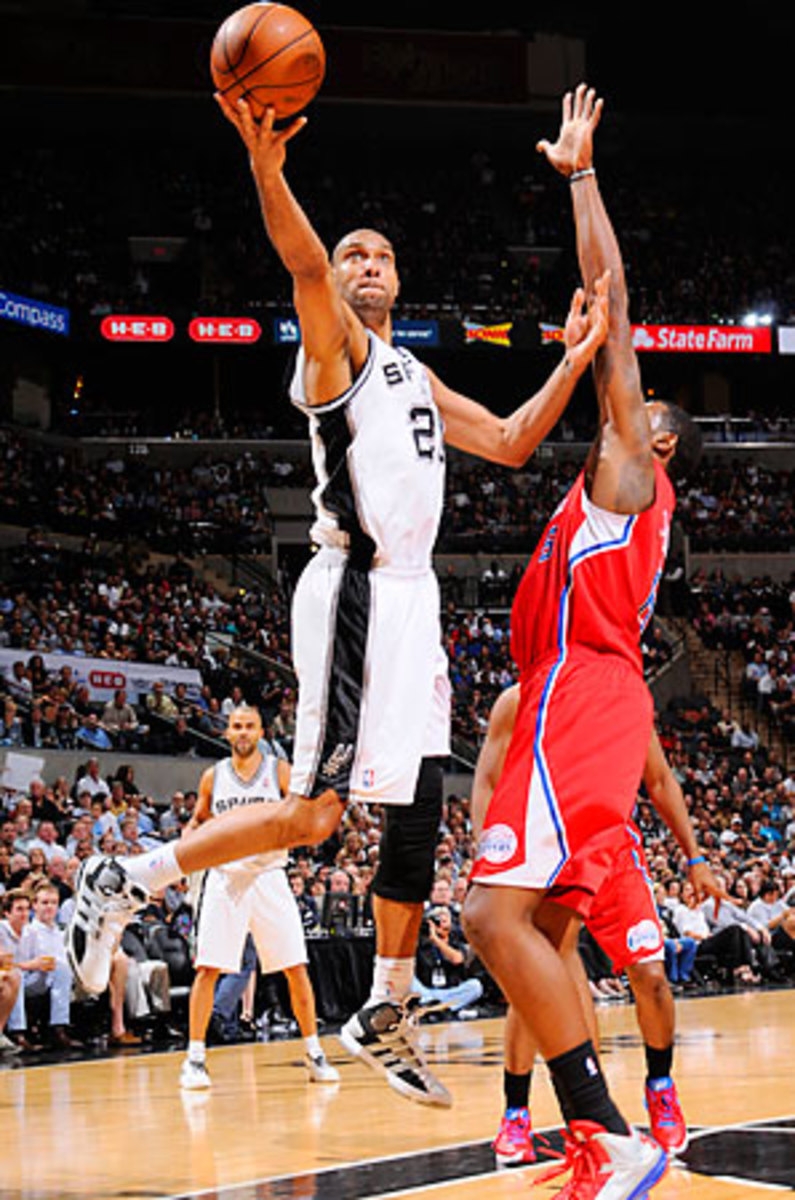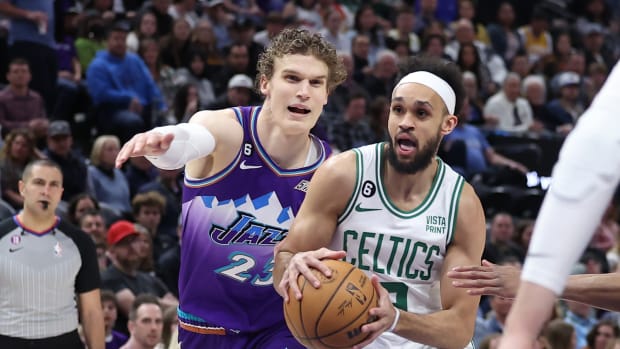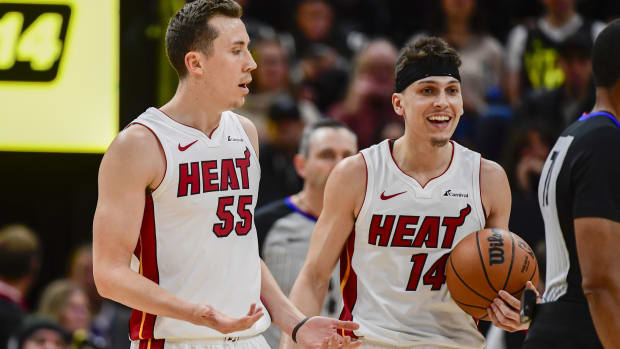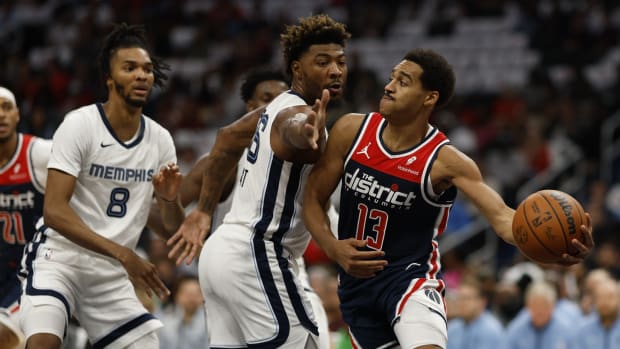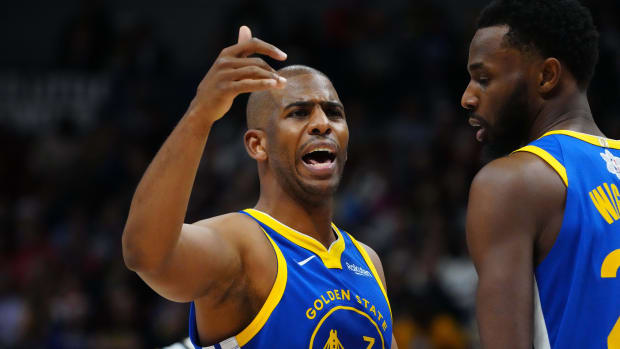Spurs snatch Game 1 from Clippers by stopping Paul, spreading ball
The Spurs? Well, they entered Game 1 of the Western Conference semifinals riding a 14-game winning streak and sporting the league's most efficient regular season offense. So it's no surprise that San Antonio cruised to a 108-92 home win behind Tim Duncan's 26 points. Make it 15 straight.
• The Clippers' greatest trump card, and the Spurs' greatest concern, is a fellow by the name of Chris Paul. This is news to nobody. A question coming into the series was how the Spurs planned to contain Paul, and whether the Clippers could manufacture points without Paul playing 48 minutes per game and single-handedly guiding every offensive possession.
The Spurs approach: make every effort to A) deter Paul from penetrating the paint and, B) force the ball out of his hands without overextending their defense. When Paul ran a high pick-and-roll, his defender (either Danny Green or Tony Parker) would go under the screen, and the Spurs' big would hedge against penetration. On a side pick-and-roll, San Antonio "iced" the screen -- forced Paul away from the screener, toward the baseline and the help defender. In both cases, the strategy was to wall off the paint and force Paul either to take a contested jumper or give up the ball.
The strategy worked. Paul managed 10 assists but only scored six points on 3-of-13 shooting. Various Clippers hit jumpers off Paul passes -- chiefly Caron Butler and Blake Griffin -- but none consistently enough to make a real difference.
• For much of the first half, the Spurs showed flashes of their regular season selves -- the fluid, precisely executed offense, the stultifying D -- but rust was there. The Clippers were able to create open shots, and the Spurs found themselves going through stretches of ragged, unpoised offense. But during San Antonio's 26-11 third-quarter run, the run that essentially decided the game, everything came together.
They pressured the ball, denied passing lanes and collapsed into the paint on dribble penetration. And they did all of these things without compromising their ability to rotate and recover to Clippers shooters. The Clippers' offense began to founder and stagnate; open shots became nearly impossible to come by. Particularly during a 9-0 run that consumed most of the last five minutes of the quarter, the Spurs used this newfound defensive pressure to right their offensive ship. Playing off Clippers misses and turnovers, the Spurs found their rhythm. Suddenly their pick-and-roll game hummed, the ball began to move freely, shooters came open.
• The Spurs' defensive energy also freed up their three-point shooting. San Antonio only recorded nine fast-break points on the night, but this number ignores the extraordinary production the Spurs generated from their mid-transition game. Their floor spacing is so precise that when they push tempo and begin moving the ball before their opponent has the chance to set their defense, they nearly always find open shooters.
In Game 1, those shooters were money. Green hit three of his six; Kawhi Leonard hit all three of his; Manu Ginobili hit three of eight. By the end of the third, the Spurs had broken the Clippers' backs by hitting 11 of 19 from beyond the arc.
• Given the intense focus on Paul in the half-court, it was incumbent on the Clippers both to find energy and production from other players and to score in the open court. The first role was filled admirably by Eric Bledsoe. Bledsoe is the wildly kinetic counterpoint to the Spurs' stoic professionalism. All night, he pressured the Spurs with his speed and aggressiveness on offense and his energy on defense and the glass. He scored 23 points on 10-of-16 shooting with four offensive rebounds, four assists and three steals in 27 minutes.
As for putting up points in the open floor, the Clippers did this proficiently in the first half, scoring 11 fast-break points, including two breakneck Griffin dunks. But over the course of the game, the Spurs' offense was simply too efficient; the Clippers were unable to create enough turnovers and missed shots to make their advantages in youth and athleticism decisive.
• It's been discussed many times before, but it bears repeating: The way that the Spurs both nurture young talent and rehabilitate foundering veterans is incredible. Coming out of college, Green and Leonard were not exactly Kevin Durant and Derrick Rose. And yet there they were Tuesday night, combining to score 31 points on 11-of-19 shooting, playing inspired defense, moving the ball like seasoned veterans.
And then there's Boris Diaw, who was (probably accurately) deemed too out-of-shape and unmotivated to deserve a spot on the league-worst Bobcats. In Game 1, Diaw battled for boards like a hungry rookie, tallying 12, five of them offensive, in just over 27 minutes. From his spot in the high post, he hit cutters and found open shooters, finishing with five assists. He even hit a three. How do the Spurs do this?






























